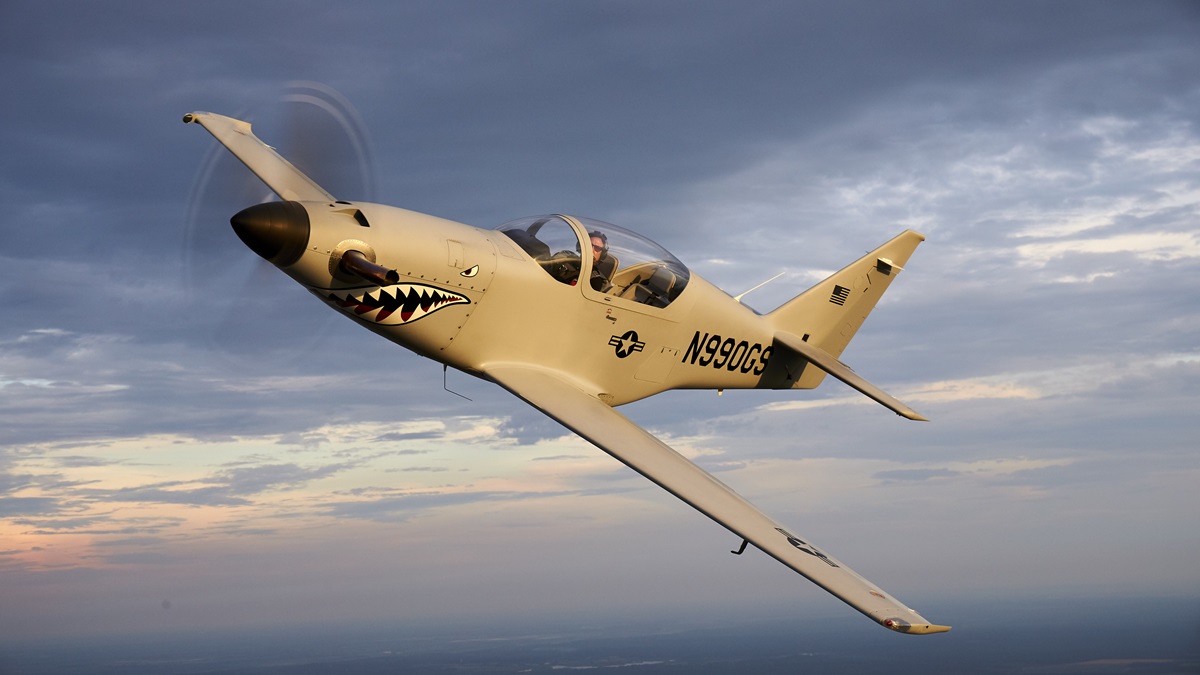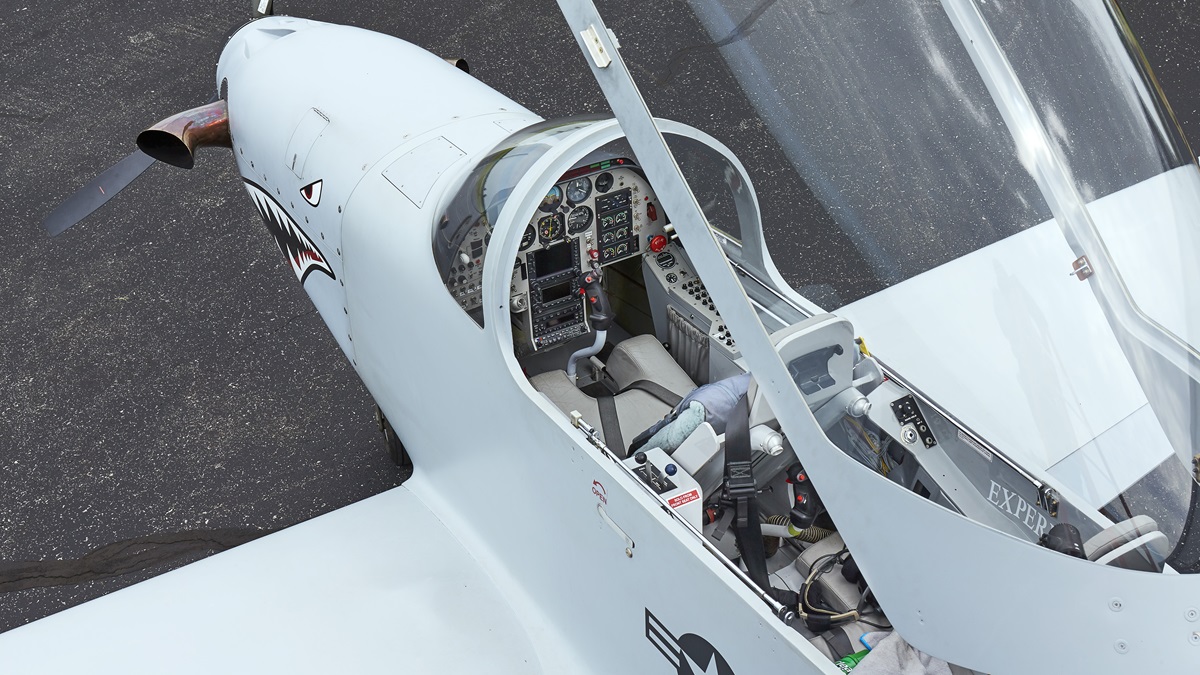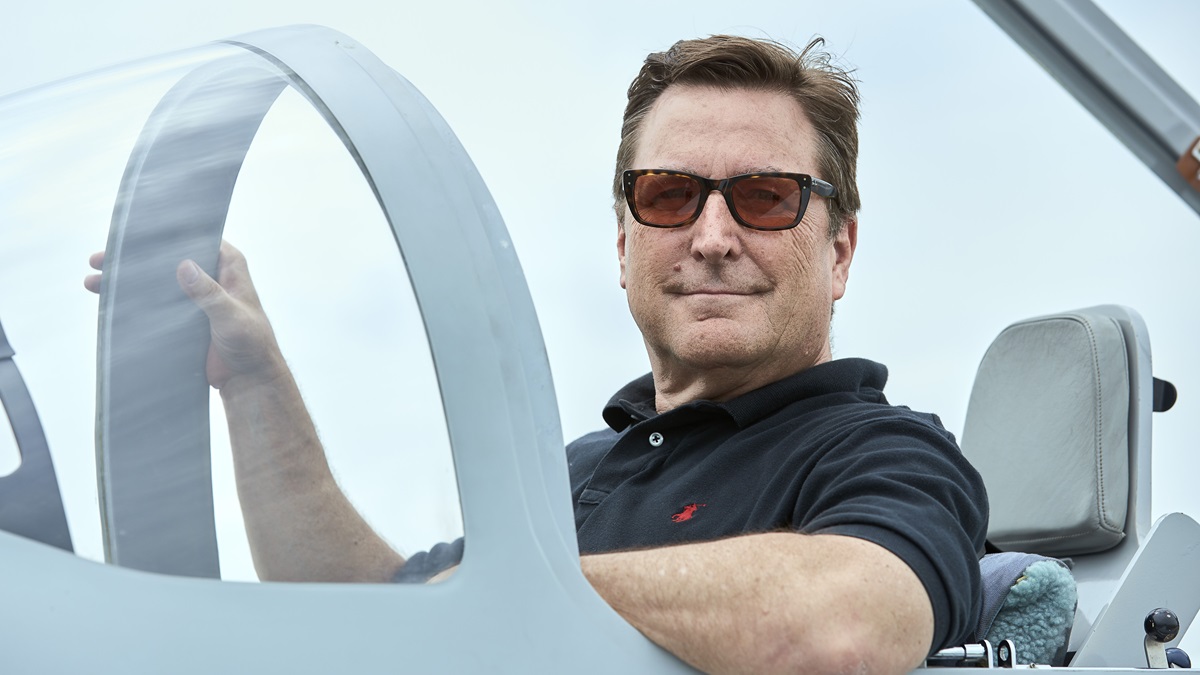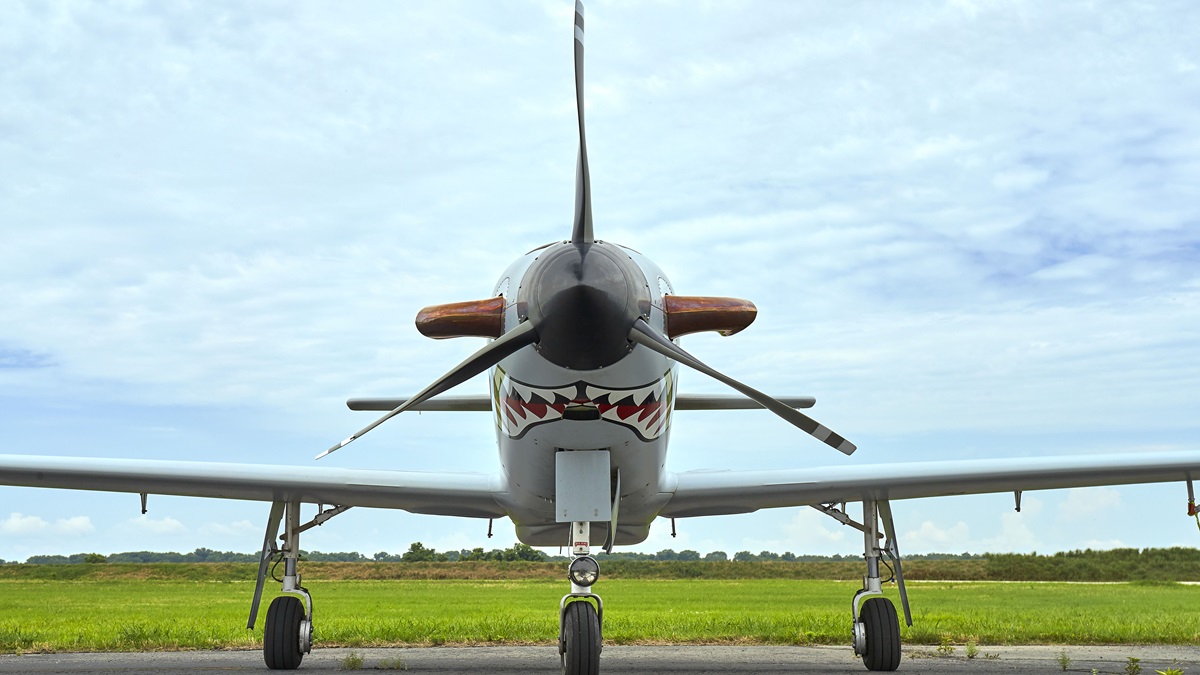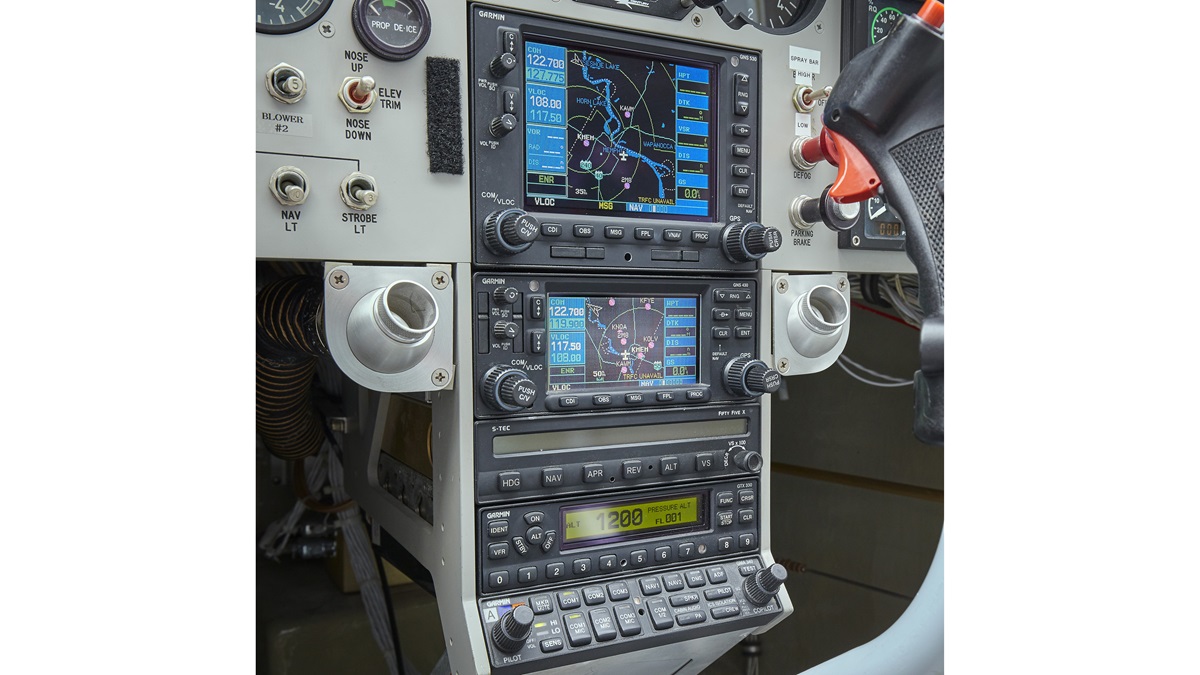Making waves
A warbird stand-in with ultimate performance
David Peeler, who used to own and fly a Hawker Sea Fury, bought this sleek, two-seat, Walter M601-powered aircraft three years ago for recreational flying, and some travel.
“Turbine airplanes are so much more reliable and less mechanically complex than high-performance piston warbirds that there’s really no comparison,” he said. “The Turbine Legend doesn’t require any specialized equipment or a ground crew to fire up and fly. You just push it out of the hangar—and the performance is right up there with a Mustang or a Corsair or just about any piston warbird.”
“The Turbine Legend doesn’t require any specialized equipment or a ground crew to fire up and fly. You just push it out of the hangar—and the performance is right up there with a Mustang or a Corsair or just about any piston warbird.” —David PeelerUnlike the corporate aircraft market, where single-engine turboprops have surged in popularity and value because of lower operating costs compared to most turbine-powered twins and jets, turboprops are attractive to sportplane pilots because of their mind-bending performance. Mark Patey’s one-of-a-kind PT6-powered Lancair Legacy nicknamed Turbulence has set multiple speed records in cross-country races, and several Garrett-powered Turbine Legends with 1,100-horsepower engines have demonstrated climb rates approaching 10,000 feet per minute.
But it didn’t start out that way—at least not for Legend.
Ridiculous performance
The Legend prototype was built in 1996 by Jeff Ackland with a Chevrolet V-8 engine and it had a belly air scoop for radiator cooling. The Chevy engine and gearbox combination proved troublesome, however, and it was swapped out with a turboprop in 1999.
About 25 Turbine Legends have been completed and flown—mostly using Walter M601 turboprops—but kit production went dormant in recent years as the company went through a series of ownership changes, and the once plentiful supply of Walter engines from Eastern Europe ceased to exist.
In the late 1990s and early 2000s, Czech-built Walter turboprops were easy to find and relatively inexpensive, and they became popular among Experimental aircraft builders and agricultural pilots. General Electric purchased Walter in 2008, however, and developed the H80 turboprop engine series. The old M601s are no longer in production.
Now Jerry Barton, a Legend owner in Vancouver, Canada, is attempting to revive the Turbine Legend brand, and he’s converting Walter-powered aircraft to Garretts and Pratt & Whitney PT6s, and Tiger Composites of New Smyrna Beach, Florida, is producing new kits.
“The North American engines are extremely reliable, parts are plentiful, and just about any aviation mechanic can work on them,” Barton said. “They can be flown efficiently and economically at high altitude—or they can provide performance that’s absolutely ridiculous. It all depends on how the pilot chooses to fly.”
Torquey on takeoff
My demo flight in Peeler’s Turbine Legend takes place on a warm morning in Memphis, Tennessee, where the airplane is hangared at Gen. DeWitt Spain Airport on the east bank of the Mississippi River.
This airplane was modified during its initial construction with a rounded windshield and bubble canopy rather than the rakish ones on other Turbine Legends. It also has a slightly larger vertical tail.
A kick-in step behind the left wing helps in making the big climb onto the wing. Peeler and I don backpack parachutes; then step over the canopy rail and into the molded, spacious, 30-degree reclined seats; strap into the five-point seat belt harness.
The unpressurized airplane has a fixed windshield and rear-hinged bubble plexiglas canopy. The cockpit has a Spartan, quasi-military feel that’s accentuated by the gray paint and military markings. The round-gauge IFR panel has a retro feel to it, and the Garmin 430/530 nav/coms are comfortingly familiar.
With the canopy down and locked, we move quickly into the engine start because the sunny morning and humid delta air are already making it hot. The 28-volt electrical system is aided today by a power cart. With the starter engaged and 15 percent rpm, push the fuel lever forward and the clicking ignitors get combustion going. Flip the generator on, and cooling fans provide a breeze under the canopy. Push the prop out of the feather position, and we’re ready to taxi.
The two wing fuel tanks are filled to their 100-gallon capacity—but that’s not much for a thirsty turboprop that consumes 50-or-so gallons an hour at low altitude.
Even at idle power, the airplane accelerates steadily on the ground, and Peeler flattens the prop blades regularly with beta to keep taxi speeds within reason. The pretakeoff checklist is surprisingly short, and with flaps set at 15 degrees, we’re ready for takeoff.
The ground roll lasts about 17 seconds and covers about 1,800 feet as the airplane accelerates and lifts off at about 85 KIAS. Peeler adds power judiciously and uses significant right rudder to counteract P-factor.
“The airplane is really torquey on takeoff,” he said. “You’ve got to use your feet, and don’t add full power until you’re going at least 100 knots.”
Once free of the ground, the Turbine Legend accelerates rapidly in the climb, and it’s indicating 170 knots as we turn crosswind.
At 95 percent power in a cruise climb, we’re ascending more than 4,000 fpm. We fly west to get away from the Class B airspace, then settle in for a series of positive-G aerobatic maneuvers.
Peeler recommends 250 KIAS for loops, half-Cubans, and other over-the-top maneuvers. Aileron forces are moderate at airspeeds over 200 KIAS, and the elevator is light. It’s easy to load up the airplane with more Gs than intended during aggressive maneuvering, and I’ve got to consciously tone it down in just about every maneuver.
There’s almost no adverse yaw, and rudder forces are moderate. Full-deflection rolls at 200 KIAS produce a roll rate of 120 degrees per second, so an aileron roll takes about three seconds to complete.
As sport airplanes, or warbird stand-ins, airplanes like the Turbine Legend don’t have to be practical or efficient. They just have to be fun and exciting, and this category of turboprop has those attributes in abundance.We slow down for a stall series. With flaps and landing gear up in level flight, the Turbine Legend starts to rumble at 90 KIAS, and a straight-ahead stall takes place at 85. With flaps and landing gear down, the wing buffets at 65 KIAS and stalls at 60 with a slight left wing drop.
Returning to the airport for landing, we lower the landing gear and flaps at 150 KIAS on downwind and the airplane decelerates almost instantly to 110 KIAS. We start a 180-degree turn at 1,000 feet agl and slow to 90 KIAS on final. The Turbine Legend flares normally, and we use about 1,700 feet during rollout with the prop in flat pitch and light braking.
This airplane has a built-in oxygen tank, but Peeler says he rarely flies at altitudes where oxygen is required. Unlike other turboprops, he says the Walter engine tends to lose efficiency above the mid-teens, negating customary speed and range advantages of flying high.
If he needs to cover more distance on a longer leg, Peeler says he reduces engine power for longer range. And he seldom covers more than 300 nautical miles in a hop.
Thrilling to fly
The Turbine Legend and airplanes like it don’t make much sense as IFR travelers. Range is limited, severely in some cases, because the airplanes were designed for piston engines with better fuel specifics.
But as sport airplanes, or warbird stand-ins, they don’t have to be practical or efficient. They just have to be fun and exciting, and this category of turboprop has those attributes in abundance.
For many years following World War II, that era’s piston fighters and advanced trainers were plentiful—and so were surplus parts, flight expertise, and maintenance skills required to keep them going. Now, the best of those increasingly rare airplanes are owned by collectors or museums, and they’re out of reach for individuals who fly recreationally.
Fortunately, however, some very impressive turboprops can fill at least part of the gap. They don’t have combat history, or historical value, or the tangible connection to aviation’s formative years that warbirds offer. They lack the incomparable sound of a Merlin, or the soul-stirring planform of a Spitfire’s elliptical wings.
But they sure are thrilling to fly—and maybe that’s enough.
Email [email protected]

